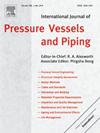Influence of geometric imperfections on the seismic performance of unanchored liquid storage tanks
Abstract
This paper investigates the inelastic buckling of imperfect unanchored cylindrical steel tanks subjected to seismic loads. A pushover-based seismic analysis was conducted considering the impulsive hydrodynamics pressures on the wall and base plate of the tank. Material and geometric nonlinearities were considered in the seismic analysis of the tanks. Three types of imperfections were analyzed: imperfections due to impacts, imperfections located at the bottom of the tank wall, and imperfections with the first buckling mode shape. The buckling analysis was performed for two tank geometries (one slender and one broad), and the effect of the imperfections was correspondingly evaluated. The considered imperfection amplitudes were established according to the New Zealand seismic design code for storage tanks. Additionally, amplitudes that exceed the normative limit were evaluated to further analyze the sensitivity to imperfection. The analysis revealed that geometric imperfections reduce the peak ground acceleration needed to induce buckling failure. Specifically, the critical peak ground acceleration for the slender tank decreased from 0.195 g to 0.180 g for the slender tank and from 0.600 g to 0.535 g for the broad tank. This buckling capacity reduction due to geometric imperfections were about 8 % and 11 % for the slender and the broad tanks, respectively.

 求助内容:
求助内容: 应助结果提醒方式:
应助结果提醒方式:


